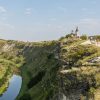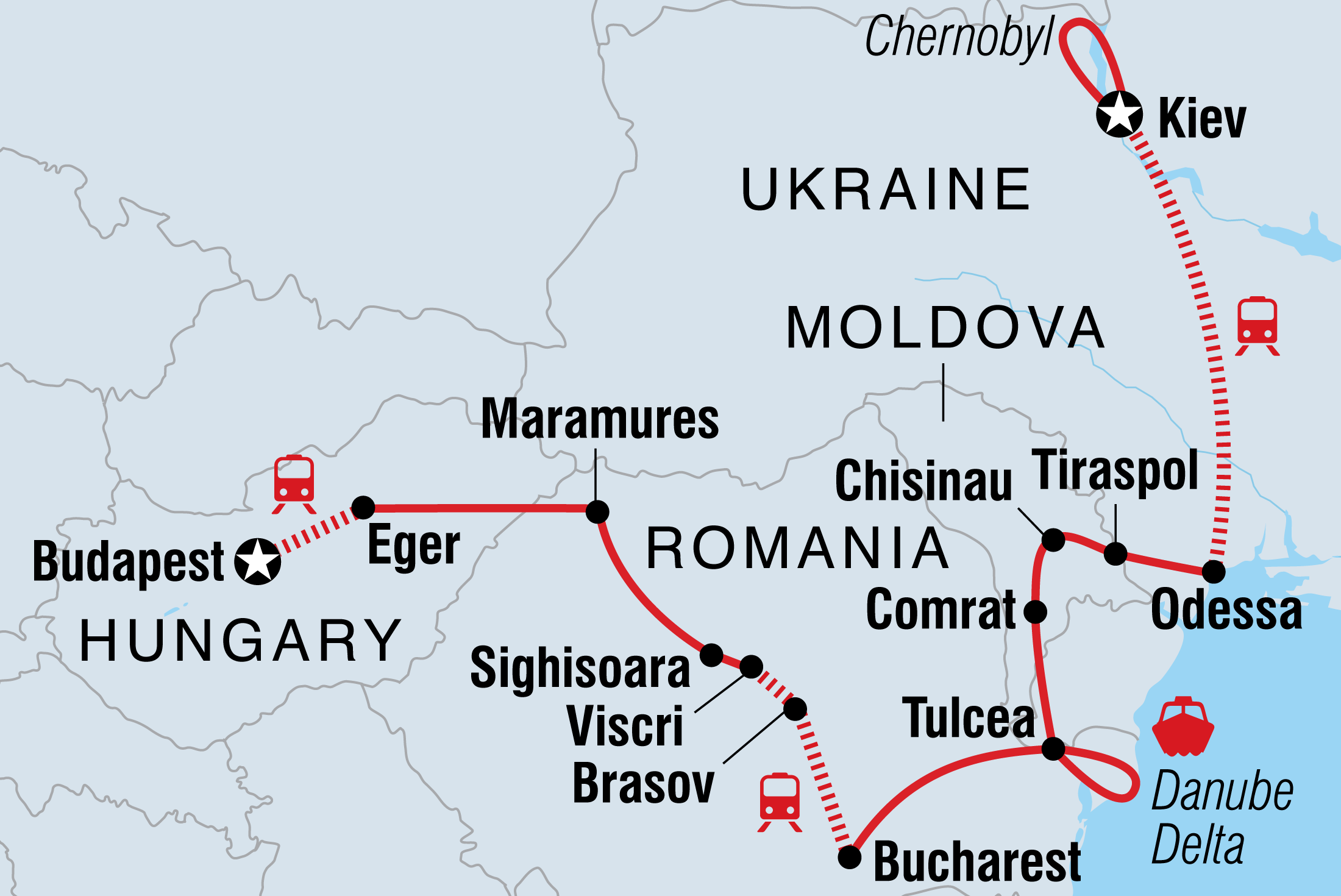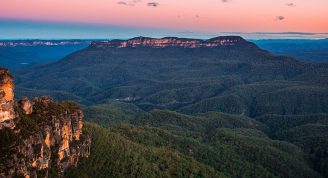Description
From the beautiful Baroque churches of Budapest to the remote lands of Bessarabia, this 22-day journey across the haunted heart of Romania’s Transylvania, Moldova – unbeknownst to tourism, the breakaway republic of Transnistria – where Soviet values persist – to the eerie wastelands of Chernobyl, the site of the world’s worst nuclear disaster, provides a fascinating insight into an intriguing region and showcases some of the least visited sights in Europe. Become acquainted with traditional Romanian culture and customs in Maramures, tour the medieval churches of Brasov, dine with a local family on an overnight homestay in Viscri and visit the Black Sea Coast of Ukraine. Get ready for adventure.
- Experience peasant life on a full-day tour through the countryside of Maramures, Romania's most traditional and colourful region. Don't be surprised if you see horse-drawn carts along the road
- Learn spooky stories while travelling through beautiful Transylvania, famous for its medieval fortified churches and as the birthplace of the inspiration for the world's most famous vampire, Dracula
- A home-stay with a local family in the Saxon/Roma town of Viscri will expose you to Romanian hospitality and some finger-licking home-cooked grub
- Discover the incredible biodiversity of Romania’s remote Danube Delta. Take a boat through this unique ecosystem to where the river meets the Black Sea, and observe the traditional daily life of its remote communities
- Moldova is famous for its wine, so sample the local tipple during a guided tour of Mileștii Mici, sitting on top of 200km of underground cellar tunnels, making it the largest quality wine collection in the world
- Become one of the few travellers to visit Transnistria, a breakaway republic in eastern Moldova, where Soviet values are still upheld and locals continue their fight for independence
- Explore Ukraine’s atmospheric abandoned Chernobyl Exclusion Zone on a guided tour, wander the eerie streets and among the buildings of the ghost town of Pripyat. Since the devastating nuclear disaster of 1986, nature has taken over the city, and wolves, foxes and other wildlife have been seen walking down the main streets



















